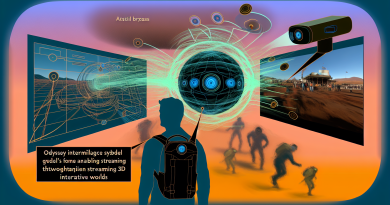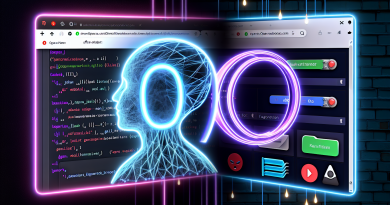Google Unveils ‘Nano Banana’: The Gemini 2.5 Flash Image Model Revolutionizing AI Image Generation
Google Unveils ‘Nano Banana’: The Gemini 2.5 Flash Image Model Revolutionizing AI Image Generation
Recently, a mysterious AI model named ‘Nano Banana’ has created quite a buzz in the AI community after its anonymous testing on the competitive evaluation platform LMArena. Its impressive performance sparked widespread speculation about the company behind it. On August 26, 2025, Google officially revealed that ‘Nano Banana’ is their latest image generation model: Gemini 2.5 Flash Image. This AI drawing tool addresses one of the most significant issues in past AI-generated images: maintaining consistency between characters and their scenes.
Breakthroughs in Editing and Consistency
Character and Scene Consistency: Solving the Major Pain Points of AI Drawing
Historically, when generating images with AI, a common frustration was the AI drawing a completely different character, even when users wanted just minor adjustments, like changing clothing or the background. Gemini 2.5 Flash Image effectively solves this problem. Users can lock the appearance of a character, pet, or object and then continue to edit across multiple images, ensuring that the main character’s features remain unchanged. For example, users could dress the same person in a bullfighter costume or have the same dog wearing a tutu while maintaining consistent characteristics.
Conversational Multi-Turn Editing: Photoshop Like Chatting with a Designer
This model supports multi-turn editing, enabling a natural experience similar to conversing with a designer. Users can issue commands step-by-step for modifying images, such as “first repaint the room blue,” “then add a wooden sofa,” and “change the season outside from summer to winter.” With every step, the model executes your requests precisely while preserving the scene’s integrity.
Natural Language Control and Image Fusion
Beyond complex editing, Gemini 2.5 supports simple text commands for fine-tuning, like “blur the background,” “remove pedestrians,” or “colorize this black-and-white photo.” Furthermore, the model has image fusion capabilities, allowing for natural combinations of two independent pictures, such as placing a portrait alongside a dog in a brand new setting or applying a floral pattern to a pair of rain boots, creating a unique style.
From Free to Commercial Use: Ensuring Accessibility and Safety in the AI Ecosystem
Google has made Gemini 2.5 Flash Image available to the public, fully integrated into its ecosystem, including the Gemini App, Gemini API, Google AI Studio, and enterprise-grade Vertex AI platform. Both free and paid users can experience professional-grade AI editing capabilities. For developers and companies, the API integration is cost-effective, with an average image generation cost of about $0.039 per image, making it a cost-effective solution for customized images in e-commerce, advertising, and game design.
To prevent technology misuse, Google has adopted measures such as visible “AI” watermarks and invisible SynthID tags on all generated images to enhance transparency around image sources, addressing potential misinformation issues.
Perspective from TechNotes
Google’s strategy of entering the competitive arena before disclosing the model’s identity proved successful. ‘Nano Banana’ built up reputation and curiosity on the LMArena platform, creating an excellent marketing effect for its official launch. This highlights the importance of “social validation” in the current AI era. Nevertheless, the breakthroughs in image generation consistency are what truly amaze, gradually turning AI image generation into a practical productivity tool.
Support TechNotes and Move Forward with Technology
If you enjoyed this article, please leave a like, share, or consider supporting my work with a cup of coffee each month, encouraging me to write more about technology!


